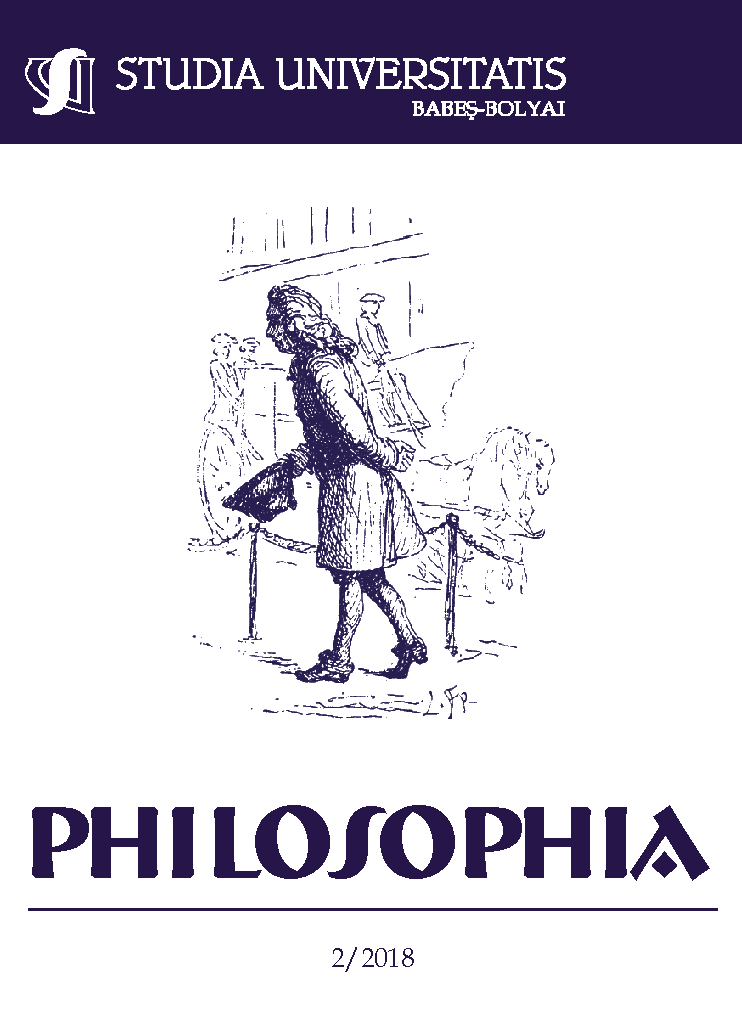MUSIC AND MATHEMATICS: SOME REMARKS ON THE IDEAS OF SPACE AND FORM
DOI:
https://doi.org/10.24193/subbphil.2018.2.02Keywords:
music, mathematics, sound, space, formAbstract
Mathematics has been used to describe, analyse and create music for millennia. The use of specific mathematical apparatus is manifest in the organization of basic musical notions into forms or objects that inhabit a sonorous landscape. The collecting of musical units into a set constitutes a starting point for analysing a musical object under different mathematical structures, and although there is no unified approach, musical analysis and composition use geometry and discrete mathematics to describe different musical relations (particularly group theory) in the process of modelling the basic elements of music, such as scales, intervals, chords or rhythms.
References
Arbonés, Javier & Milrud, Pablo, L’harmonie est numérique. Musique et mathématiques, RBA France, 2013
Callender, Clifton, & Quinn, Ian, & Tymoczko, Dmitri, “Generalized Voice-Leading Spaces”, in Science, Vol. 320, Issue 5873/ 18, Apr, 2008, AAAS, pp. 346-348, DOI: 10.1126/science.1153021
Callender, Clifton, & Quinn, Ian, & Tymoczko, Dmitri, “Online Supporting Material for Generalized Voice-Leading Spaces”, http://science.sciencemag.org/content/suppl/2008/04/17/320.5874.346.DC1.
Cohn, Richard L., “Neo-Riemannian Operations, Parsimonious Trichords, and Their Tonnetz Representations”, in Journal of Music Theory 41/ 1/ 1997, Duke University Press Journals, pp. 1-66.
Deleuze, Gilles, Francis Bacon. Logique de la sensation, Éditions du Seuil, 2002.
Devlin, Keith, The Language of Mathematics. Making the Invisible Visible, W. H. Freeman & Co., 2000.
Douthett, Jack, & Steinbach, Peter, “Parsimonious Graphs: A Study in Parsimony, Contextual Transformations, and Modes of Limited Transposition”, in Journal of Music Theory 42/ 2 /1998, Duke University Press Journals, pp. 241-263.
Fauvel, John, & Flood, Raymond & Wilson, Robin (eds.), Music and Mathematics. From Pythagoras to Fractals, Oxford University Press, 2003.
Fiore, Thomas M., Music and Mathematics. Lecture Notes, http://www.personal.umd.umich.edu/~tmfiore/1/music.html.
Helmholtz, Hermann L. F., On the Sensations of Tone. As a Physiological Basis for the Theory of Music, Dover Publications, New York, 1954.
Lewin, David, Generalized Musical Intervals and Transformations, Oxford University Press, 2007.
Loy, Gareth, Musimathics. The Mathematical Foundations of Music, Vol. 1. MIT Press, 2006.
Mac Lane, Saunders, Mathematics. Form and Function, Springer-Verlag, 1986.
Mainzer, Klaus, Symmetry and Complexity. The Spirit of Beauty of Nonlinear Science, World Scientific Publishing, 2005.
Mazzola, Guerino, The Topos of Music. Geometric Logic of Concepts, Theory, and Performance, Birkhäuser, 2003.
Messiaen, Olivier, Traité de rythme, de couleur, et d’ornithologie, Vol. I., Trans. by Melody Baggech, A document submitted to the Graduate Faculty of the School of Music in partial fulfilment of the requirements for the degree of Doctor of Musical Arts, Norman, Oklahoma, 1998
Shepard, R. N. “Circularity in judgments of relative pitch”, in Journal of the Acoustical Society of America, 36/ 1964, AIP, 2345-2353.
Stillwell, John, Roads to Infinity. The Mathematics of Truth and Proof, A K Peters, 2010.
Thyssen, Pieter,& Ceulemans, Arnout, Shattered Symmetry. Group Theory from the Eightfold Way to the Periodic Table, Oxford University Press, 2017.
Tymoczko, Dmitri, A Geometry of Music. Harmony and Counterpoint in the Extended Common Practice, Oxford University Press, 2011.
Wells Hall Rachel, “Geometrical Music Theory”, in Science, Vol. 320, Issue 5874/ 18 Apr 2008, AAAS, pp. 328-329, DOI: 10.1126/science.1155463.
Downloads
Published
How to Cite
Issue
Section
License
Copyright (c) 2018 Studia Universitatis Babeș-Bolyai Philosophia

This work is licensed under a Creative Commons Attribution-NonCommercial-NoDerivatives 4.0 International License.





